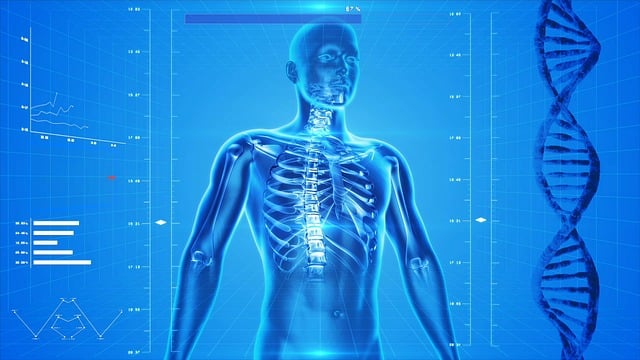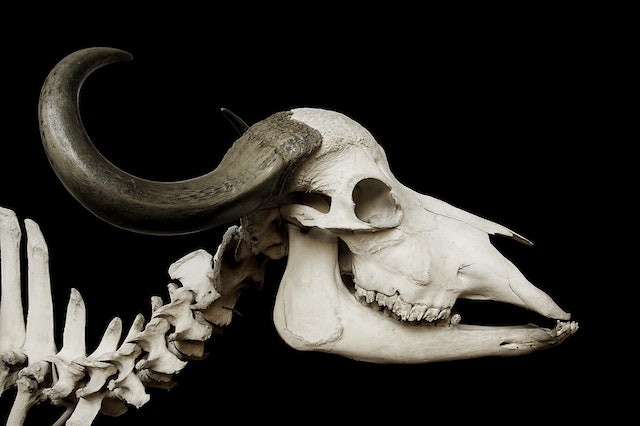An exoskeleton is a hard outer shell that protects the organism from harm while an endoskeleton is found within the body, providing support and structure for various organs. Each type of skeleton serves its own purpose and can be beneficial in different ways depending on the species or creature it belongs to.
What is an exoskeleton?
An exoskeleton is a rigid outer shell that supports and protects an animal’s body. The word comes from the Greek words exo, meaning “outside,” and skeleton, meaning “dried up.” Exoskeletons are found in insects, crustaceans, and some other invertebrates.
What is an endoskeleton?
An endoskeleton is a type of skeleton that is located inside the body. It provides support and protection for the internal organs. The endoskeleton is made up of bone and cartilage. The bones of the endoskeleton are connected to each other by joints.
How do exoskeletons and endoskeletons differ?
The main difference between exoskeletons and endoskeletons is that exoskeletons are located on the outside of an organism’s body, while endoskeletons are located on the inside. Exoskeletons provide support and protection for an organism, while endoskeletons act as a framework to which muscles attach. Endoskeletons also protect internal organs from injury.
One of the biggest differences between these two types of skeletons is that endoskeletons are made up of bone, while exoskeletons are made up of chitin. Chitin is a tough, fibrous substance that helps to protect the organism from predators and the environment. It also provides support for the organism’s muscles and organs.
Endoskeletons are found in vertebrates, such as humans. Exoskeletons are found in invertebrates, such as insects and crustaceans. Another big difference between these two types of skeletons is that endoskeletons grow with the organism, while exoskeletons do not. This means that an insect can continue to grow throughout its life, while a human stops growing once they reach adulthood.
Endoskeletons have some advantages over exoskeletons. For example, because they are located on the inside of the body, they are better protected from injury. They also allow for a greater range of motion because they are not as rigid as exoskeletons. However, exoskeletons have some advantages over endoskeletons as well. For example, because they are located
What animals have endoskeleton?
Animals with endoskeletons include humans, other mammals, reptiles, birds, and amphibians. These animals all have a skeleton that is inside their bodies. This means that their muscles are attached to their skeleton on the inside of their bodies.
What animals have exoskeleton?
There are many animals that have exoskeletons. Some examples include crabs, lobsters, and shrimps. These animals have a hard outer shell that protects their bodies. Other animals with exoskeletons include insects, such as beetles and ants. The exoskeleton of these animals is made up of hardened plates that are joined together by softer tissues.
Do humans have an endoskeleton or exoskeleton?
(Image by PublicDomainPictures from Pixabay )

Humans have an endoskeleton, which is an internal skeleton made of bone and cartilage. The human endoskeleton provides support, protection, and shape to the body. The bones of the endoskeleton are connected by joints, which allow for movement and flexibility.
The human endoskeleton has several functions, including:
- Support: The bones of the endoskeleton provide support for the body and allow us to stand upright.
- Protection: The endoskeleton protects vital organs such as the brain, heart, and lungs. For example, the ribcage protects the heart and lungs, while the skull protects the brain.
- Movement: The endoskeleton works in conjunction with muscles to allow for movement. Muscles attach to bones via tendons, and when muscles contract, they pull on the bones, causing movement.
- Blood cell production: Certain bones in the body, such as the pelvis and sternum, produce blood cells.
In contrast, animals with exoskeletons, such as insects and crustaceans, have an external skeleton made of chitin or calcium carbonate. While exoskeletons provide protection and support, they can also limit the size and mobility of the animal. Endoskeletons, on the other hand, allow for greater mobility and flexibility, but are more vulnerable to injury if not protected by soft tissues such as muscle and skin.
The function and structure of the exoskeleton in insects
The exoskeleton in insects is a tough, external layer that covers the body of the insect. It is made primarily of a polymer called chitin, along with protein and other materials. The exoskeleton serves several important functions in the life of an insect.
Structure:
The exoskeleton of an insect is divided into several segments, called sclerites. These sclerites are connected by flexible areas of cuticle, called sutures, which allow for movement and flexibility. The exoskeleton is also covered by a thin, waxy layer called the epicuticle, which helps prevent water loss and protect against pathogens.
The exoskeleton in insects has several important functions, including:
- Protection: The exoskeleton provides a physical barrier that protects the insect from predators, parasites, and environmental stressors.
- Support: The exoskeleton provides structural support for the body, as well as a surface for muscle attachment.
- Movement: The muscles in an insect’s body attach to the inside of the exoskeleton, allowing for movement and locomotion.
- Sensory functions: The exoskeleton is covered in sensory hairs and other structures that help the insect sense its environment.
- Growth and development: The exoskeleton is shed and replaced periodically during the insect’s life in a process called molting. This allows the insect to grow and develop.
The structure and function of the exoskeleton in insects has evolved over millions of years to adapt to the diverse range of environments in which insects live. The exoskeleton is a key factor in the success of insects as a group, allowing them to occupy a wide variety of ecological niches and play important roles in ecosystems around the world.
The structure and function of the human skeleton
The human skeleton is made up of 206 bones that are connected by ligaments and joints. The skeleton provides support for the body, protects vital organs, and allows for movement.
Bones are strong and have a hard outer surface that helps to protect the softer tissue inside. The bone marrow inside the bones produces blood cells. Joints allow for movement between the bones. Ligaments connect the bones to each other and help to keep them in place.
The impact of aging on the human skeletal system
As we age, our bones gradually lose density and strength. This process, called osteoporosis, can lead to an increased risk of fractures, particularly in the hip, spine, and wrist. Osteoarthritis, another age-related condition affecting the skeletal system, results in the deterioration of cartilage between the joints. This can cause pain and stiffness in the joints.
How do mollusks use their shells as exoskeletons for protection and support?
As mollusks grow, they build up their shells layer by layer. The shell provides both protection from predators and support for the body. The hard outer shell is made of calcium carbonate and is secreted by the mantle, a thin layer of tissue that covers the body. The shell is attached to the mantle at the edge of the animal.
The shell protects the animal in several ways. The hard outer layer helps to deflect predators’ attacks. The close fit between the shell and mantle also makes it difficult for predators to pry open the shell and get to the animal inside. In addition, the shell provides some camouflage against predators that might be looking for a meal.
The shell also supports the body of the mollusk. The animal’s muscles are attached to the inside of the shell, so that when they contract, the animal can move forwards or backwards. This mode of locomotion is called ‘ crawling’. Some mollusks also have a foot that they use to help them move along, but not all mollusks have this appendage.
Featured Image By – Photo by Pixabay:









